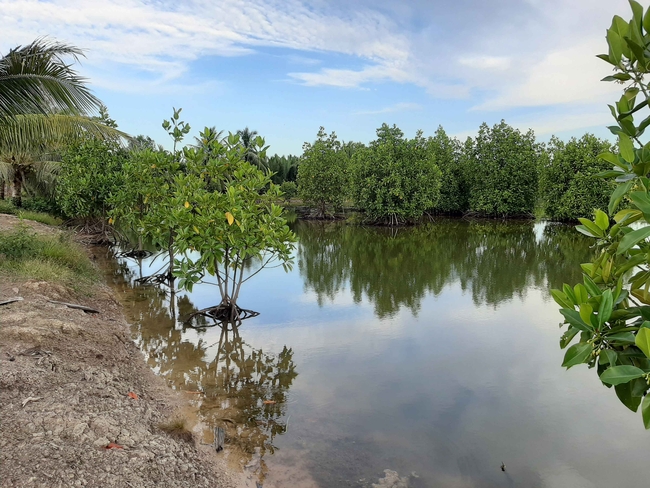11/08/2021 | A team from the Leibniz Centre for Tropical Marine Research (ZMT) joins forces with colleagues from Kaltara University and the University of Borneo Tarakan in Indonesia to evaluate ecologically and economically sustainable aquaculture concepts. The new research project "KATRINA" (short for "Kalimantan Aquaculture and Integrated Mangrove Rehabilitation"), led by ZMT mangrove expert Professor Martin Zimmer, is funded by the Deutsche Gesellschaft für Internationale Zusammenarbeit (GIZ) in Indonesia.
Indonesia is one of the market leaders for aquaculture products. According to the UN Food and Agriculture Organization (FAO), the country produces around 900,000 tonnes of crustaceans per year (as of 2018), ranking second in the world after China. How long can capacities and the necessary growth be maintained at this level
In many regions of Indonesia, yields from fishing and aquaculture have already declined in recent years. Locals fear for their livelihoods. At the same time, mangrove forests are clear-felled to give space for aquaculture ponds in many places. These ponds can often only be used for few years, and new areas are deforested to again make way for more ponds.
The Indonesian government has recognised this destructive spiral and supports the reforestation of mangroves in aquaculture areas. Aquaculture farms receive funding to plant mangroves in and around the ponds, integrating them into aquaculture. Although reforestation reduces the usable space of the ponds, aquaculture farms benefit from mangroves, as the trees filter nutrients and pollutants from the water and provide shelter and food for fish and crustaceans.
The ZMT study on the potential of making aquaculture more ecologically and economically sustainable through mangrove reforestation runs until the end of 2022. Researchers from the German institute are working together with colleagues from the scientific community and aquaculture farms in North Kalimantan with the aim of adapting existing concepts, developing pond design and making aquaculture more mangrove-friendly, while securing local shrimp and crab production and protecting natural resources against overfishing. Through close exchange with local fisheries, aquaculture farms and universities, jointly gained knowledge and optimised infrastructures can continue to be implemented even after the project has ended.
“Especially during the pandemic, when research on site is hardly possible, we are very grateful for the interest and support by our research partners in Indonesia to start this project even under such difficult circumstances,” says Karl Schrader from ZMT, who is providing scientific support for the project. “Longstanding cooperation based on trust is now an even more important basis for international research.”
About aquaculture in Indonesia
The giant tiger prawn (Penaeus monodon) is most commonly cultivated in Indonesia, can grow to more than 30 centimetres in size and more than 125 grams in weight. In Southeast Asia, but also in Europe, they are considered a delicacy and are exported from Indonesia in large quantities. The tiger shrimps are either caught by fishers in the mangroves near river deltas and on the coast, or are farmed in aquaculture.
The mangrove mud crab Scylla serrata spends much of its complex life cycle in mangrove ecosystems. It is an important catch for local small-scale fisheries, and sales on national and international markets have increased in recent years. Since hatchery-based reproduction still does not reach high quantities, crabs for aquaculture are taken from the wild population. Wild stocks can no longer withstand this pressure and have already declined noticeably in many places. For the long-term protection of the affected crab populations, the University of Borneo Tarakan is already working on a modern breeding station for mangrove crabs. In cooperation with ZMT, inventories and modelling of fishing impact will now help to better assess the situation of the free-living stocks.





